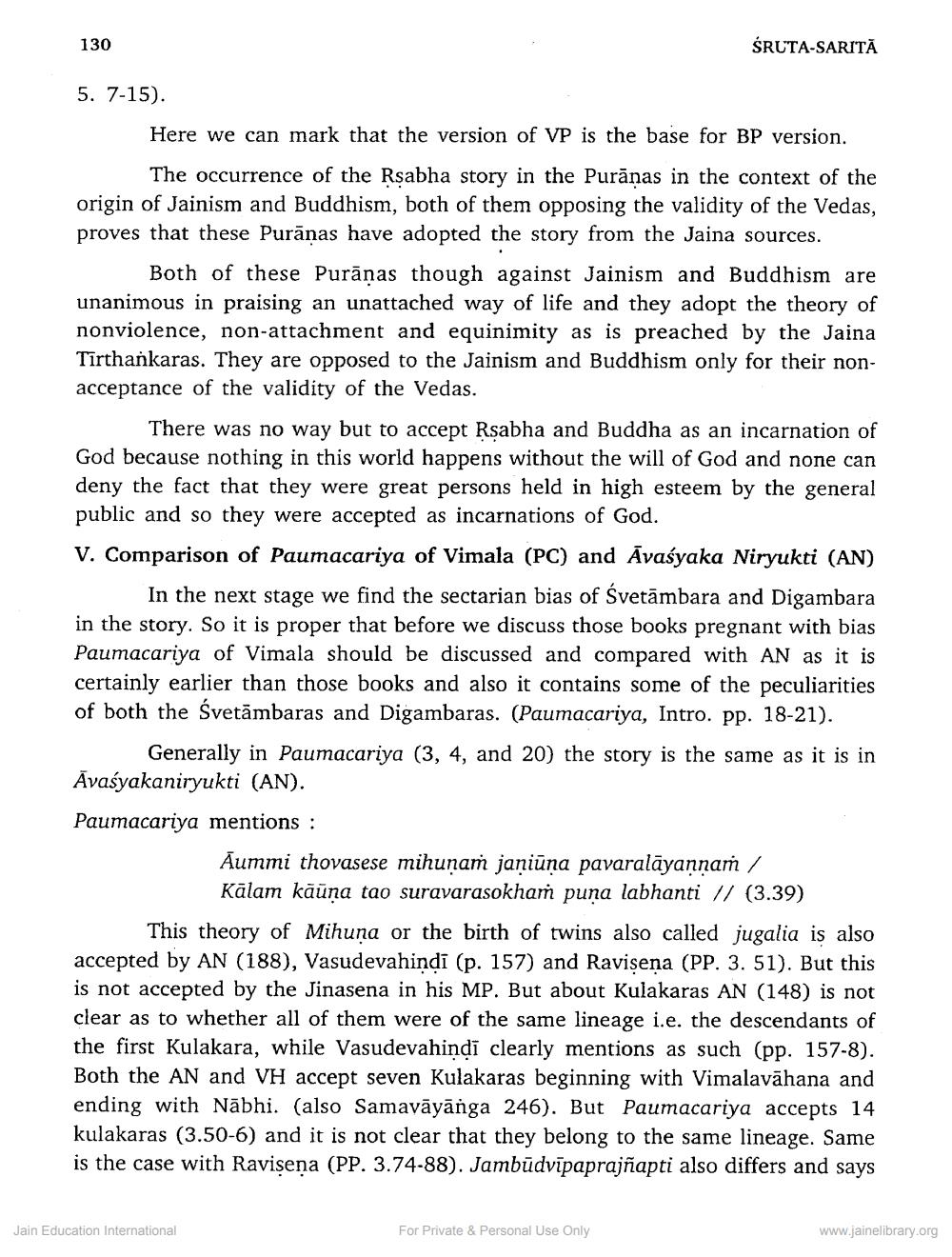________________
130
5. 7-15).
Here we can mark that the version of VP is the base for BP version.
The occurrence of the Rṣabha story in the Purāņas in the context of the origin of Jainism and Buddhism, both of them opposing the validity of the Vedas, proves that these Purāņas have adopted the story from the Jaina sources.
Both of these Purāņas though against Jainism and Buddhism are unanimous in praising an unattached way of life and they adopt the theory of nonviolence, non-attachment and equinimity as is preached by the Jaina Tirthankaras. They are opposed to the Jainism and Buddhism only for their nonacceptance of the validity of the Vedas.
ŚRUTA-SARITĀ
There was no way but to accept Rṣabha and Buddha as an incarnation of God because nothing in this world happens without the will of God and none can deny the fact that they were great persons held in high esteem by the general public and so they were accepted as incarnations of God.
V. Comparison of Paumacariya of Vimala (PC) and Avaśyaka Niryukti (AN)
In the next stage we find the sectarian bias of Śvetāmbara and Digambara in the story. So it is proper that before we discuss those books pregnant with bias Paumacariya of Vimala should be discussed and compared with AN as it is certainly earlier than those books and also it contains some of the peculiarities of both the Svetāmbaras and Digambaras. (Paumacariya, Intro. pp. 18-21).
Generally in Paumacariya (3, 4, and 20) the story is the same as it is in Avaśyakaniryukti (AN).
Paumacariya mentions :
Jain Education International
Aummi thovasese mihunam janiūna pavaralāyaṇṇaṁ / Kālam kāūņa tao suravarasokham puna labhanti // (3.39)
This theory of Mihuna or the birth of twins also called jugalia is also accepted by AN (188), Vasudevahindi (p. 157) and Ravisena (PP. 3. 51). But this is not accepted by the Jinasena in his MP. But about Kulakaras AN (148) is not clear as to whether all of them were of the same lineage i.e. the descendants of the first Kulakara, while Vasudevahindi clearly mentions as such (pp. 157-8). Both the AN and VH accept seven Kulakaras beginning with Vimalavāhana and ending with Nabhi. (also Samavāyānga 246). But Paumacariya accepts 14 kulakaras (3.50-6) and it is not clear that they belong to the same lineage. Same is the case with Ravisena (PP. 3.74-88). Jambudvipaprajñapti also differs and says
For Private & Personal Use Only
www.jainelibrary.org




